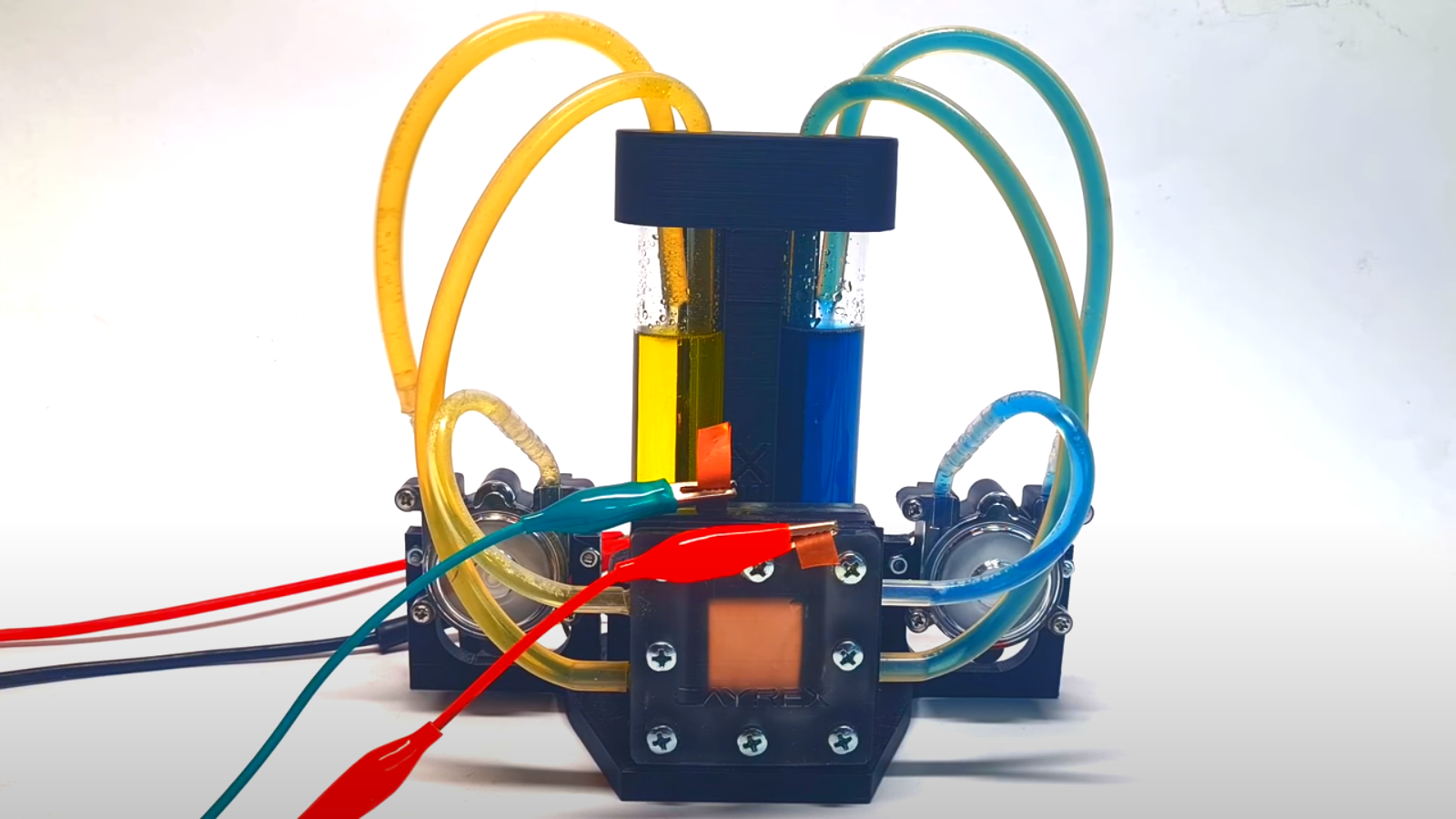A Vanadium Redux Flow Battery You Can Build [Hackaday]

Vanadium flow batteries are an interesting project, with the materials easily obtainable by the DIY hacker. To that effect [Cayrex2] over on YouTube presents their take on a small, self-contained flow battery created with off the shelf parts and a few 3D prints. The video (embedded below) is part 5 of the series, detailing the final construction, charging and discharging processes. The first four parts of the series are part 1, part 2, part 3, and part 4.
The concept of a flow battery is this: rather than storing energy as a chemical change on the electrodes of a cell or in some localised chemical change in an electrolyte layer, flow batteries store energy due to the chemical change 100vw, 400px”> of a pair of electrolytes. These are held externally to the cell and connected with a pair of pumps. The capacity of a flow battery depends not upon the electrodes but instead the volume and concentration of the electrolyte, which means, for stationary installations, to increase storage, you need a bigger pair of tanks. There are even 4 MWh containerised flow batteries installed in various locations where the storage of renewable-derived energy needs a buffer to smooth out the power flow. The neat thing about vanadium flow batteries is centred around the versatility of vanadium itself. It can exist in four stable oxidation states so that a flow battery can utilise it for both sides of the reaction cell.</p>
<p><span></span></p>
<p>The reaction plates in the cell’s heart are printed with an ‘ABS-like’ resin for this build. They comprise a flat plate with through-holes for clamping, a central opening to house the charge collector electrodes, protection layers, and the ion exchange membrane. Pipes on the edges lead to tiny holes at either end of the flow region, on the inner edge, to enable electrolytes to flow to and from the external reservoir. Resin printing was chosen due to its strength and, most importantly, the surface smoothness, which will help to prevent leaks. The electrodes are copper sheets, with a protective layer of conductive HDPE and a second layer of graphite felt. The last layer allows electrons to be conducted to the HDPE and copper electrode whilst allowing a lateral electrolyte flow from the reservoir. A <a href=)
The theoretical cell voltage is centred on 1.5 volts, but a fair current must be available even for such a small electrode area. Watching the two halves of the cell change the electrolyte state visibly during the charging process was fun. Vanadium does produce some spectacular colours in its various oxidation states! If you want to play along at home, the STL files for the 3D-printed parts can be found on the Cayrex2 Patreon site.

![a-vanadium-redux-flow-battery-you-can-build-[hackaday]](https://i0.wp.com/upmytech.com/wp-content/uploads/2024/03/172582-a-vanadium-redux-flow-battery-you-can-build-hackaday.png?resize=800%2C445&ssl=1)